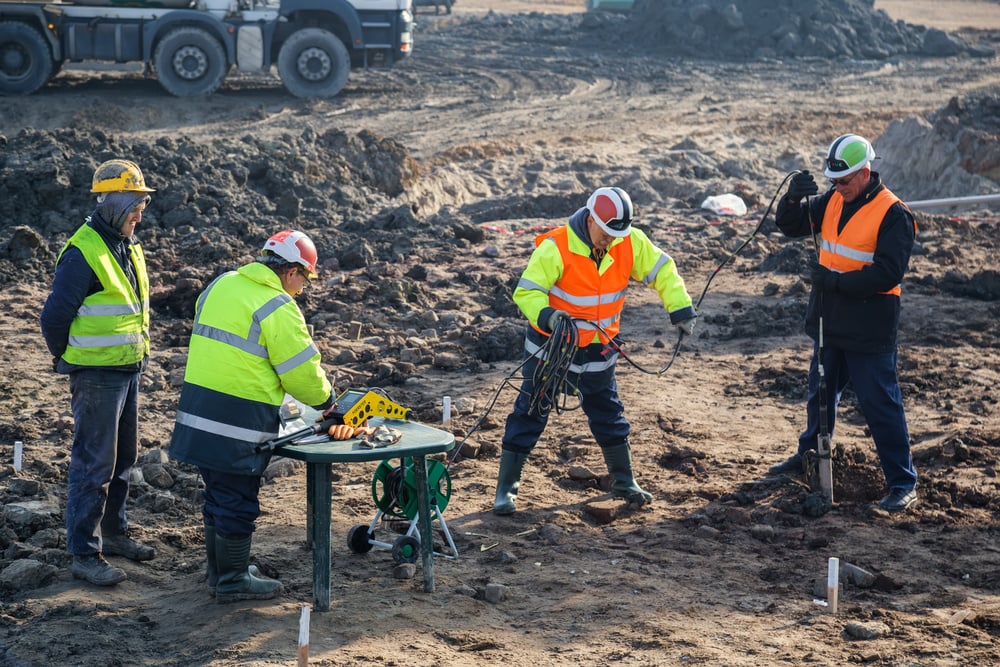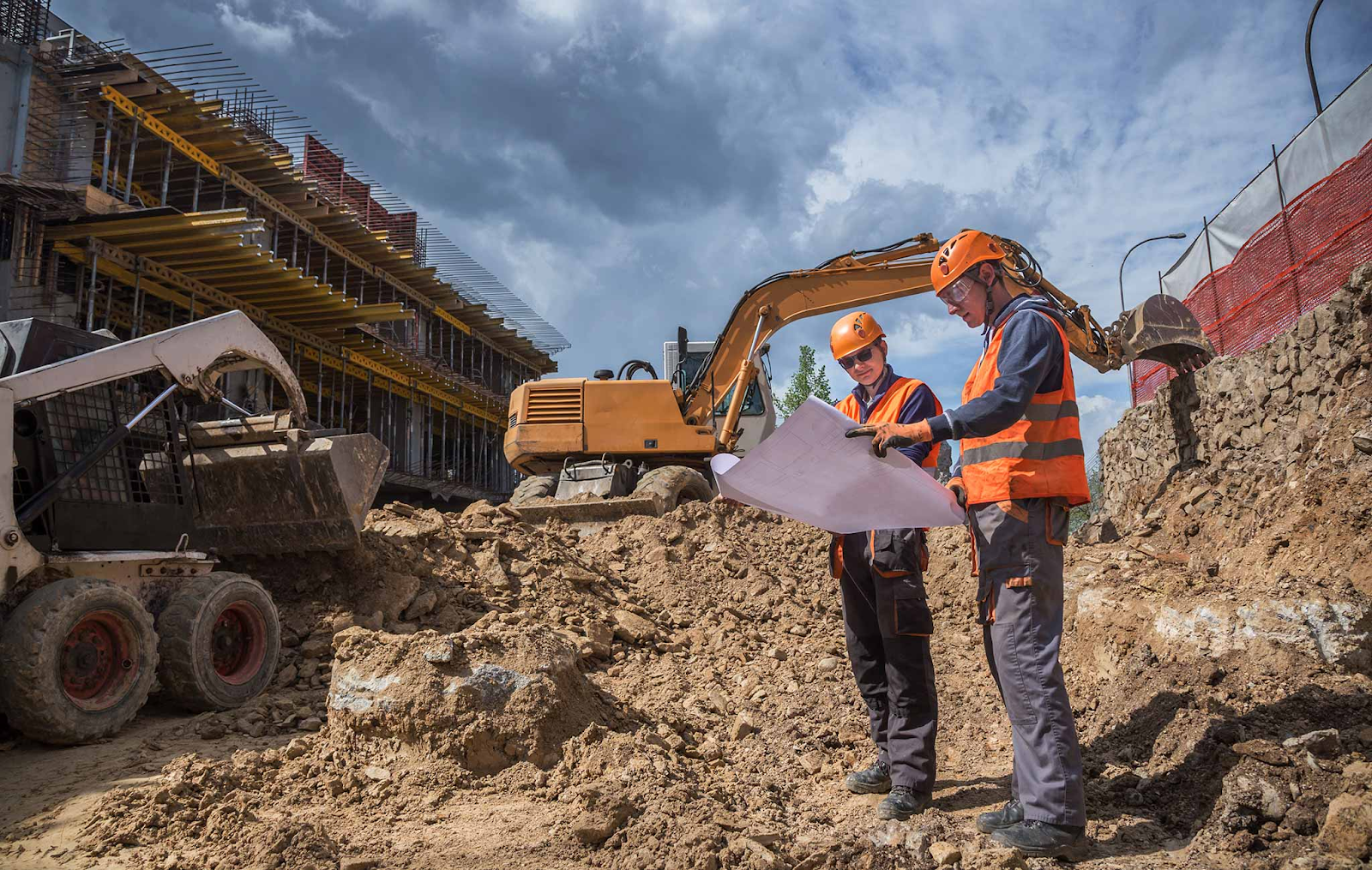The Facts About Geotechnical Engineering For Construction Projects Revealed
The Main Principles Of Geotechnical Engineering For Construction Projects
Table of ContentsThe Basic Principles Of Geotechnical Engineering For Construction Projects Geotechnical Engineering For Construction Projects Can Be Fun For EveryoneNot known Details About Geotechnical Engineering For Construction Projects Geotechnical Engineering For Construction Projects Can Be Fun For AnyoneAll About Geotechnical Engineering For Construction Projects
For that reason, during the examination, it is essential to drill at the called for deepness and the needed variety of openings as per the recommendation of the Canadian Structure Design standard. Often, the owner may save some Geotechnical Examination expense but wind up spending greater than the prepared for throughout the construction cost.The responsibilities of the geotechnical professional involve supplying material screening for construction support. Geotechnical Engineering for Construction Projects. Geotechnical designers evaluate all the field examination reports to ensure that building is taking place according to the task spec. Throughout construction, a confirmatory examination for dirt compaction is done on-site to ensure that no future settlement takes place
After the concrete is put -7 days and 28 days- tests are performed on concrete samples gathered from the website to make certain that the concrete poured satisfies the layout requirement. Asphalt core is taken after the Asphalt is laid and compacted to confirm that it fulfills the design requirement. All research laboratory test reports are evaluated by the Geotechnical Designer to guarantee that it satisfies the project requirements.
The Of Geotechnical Engineering For Construction Projects

Geotechnical engineering plays a critical duty in ensuring the stability of building projects. Discover exactly how it influences layout and overall project success. Geotechnical engineering is an essential branch of civil engineering that focuses on comprehending the practices of earth materials, such as dirt and rock. It includes analysing subsurface conditions to guarantee that a building's structure or framework is stable and secure.

For a trusted foundation and a smooth building procedure, depend on to supply the competence you need. Contact to get expert advice and geotechnical services tailored to your following job.
Excitement About Geotechnical Engineering For Construction Projects
When embarking on a land development task, understanding the ground underneath your feet is as important as the frameworks you plan to construct above it. Our Geotechnical Engineering team evaluate the ground, guaranteeing it appropriates for the suggested development while offering you with the info called for to satisfy your project objectives.
Geotechnical Design looks at the formation of the ground, as it is the structure obstructs for all tasks. Where frameworks require to be created relative to the ground conditions; ground problems (e.g., soft ground) might call for enhancing relying on the size of the desired framework. Before structure, you need to understand about the groundwater, dirt framework, and liquefaction likelihood of your land.
For websites that are not linked on the regional authority framework extra site investigations would be needed to supply technical inputs for on-site stormwater and wastewater. We have actually experienced Geotechnical Engineers based in each workplace, supporting your geotechnical requirements across the country. Get to out to us to talk about exactly how we can support your next task.
These records are customized to meet the particular requirements of a job and consist of layout criteria and advice for the construction of a series of manufactured structures. In addition to giving working as a consultant solutions covering locations such as incline security and load-bearing capabilities for different materials, these engineers embark on study and growth activities to boost methodologies, devices, products understanding and analysis covering entire lifecycles.
Getting My Geotechnical Engineering For Construction Projects To Work

Rates of pay generally increase as your expertise and abilities grow, with standards directing to a graduate beginning salary of in between more tips here 18,000 and 28,000 per year in the UK. This rises to 26,000 to 36,000 with a couple of years of experience and afterwards reaching 40,000 to 60,000+ for senior, legal or master engineers.
With the appropriate application it is possible to grasp the career and gain entrance to a tough yet gratifying and vital career. A geologist would need to retrain to end up being a geotechnical engineer, although there is plenty of cross-over between both careers, which could make this much easier - Geotechnical Engineering for Construction Projects. Rock hounds require to have an understanding of dirts, rocks and various other materials from a scientific perspective, while geotechnical engineers tale their knowledge of matters such as dirt and rock mechanic, geophysics and hydrology and use them to engineering and environmental jobs
When beginning, these designers will certainly have a tendency to deal with less complex tasks, Home Page developing knowledge and experience ready for more challenging job later on. Geotechnical engineers tend to specialise in particular areas as they expand in experience, concentrating on certain facilities such as railways, roads or water. These engineers also work with sustainable energy, offshore and onshore oil and gas, nuclear power, and much more.
Little Known Facts About Geotechnical Engineering For Construction Projects.
The time taken to come to be a geotechnical designer depends on where you are based, where you research study and what level of education and learning you want to achieve before entering the workplace. Generally-speaking it takes 3-4 years to reach the standard demands to begin a profession as a geotechnical designer.
These operations allow specialists to examine a host of dirt mechanics including weight, porosity, void-to-solid bit proportion, leaks in the structure, compressibility, maximum shear stamina, birthing ability and deformations. If the structure needs a deep structure, engineers will use a cone infiltration examination to estimate the amount of skin and end bearing resistance in the subsurface.
When evaluating a slope's balance of shear stress and shear stamina, or its capability to hold up against navigate to these guys and undergo activity, rotational slides and translational slides are frequently taken into consideration. Rotational slides fail along a bent surface area, with translational slides occurring on a planar surface. An expert's goal is to identify the problems at which a slope failing can occur.
Often, findings recommend that a website's dirt need to be treated to boost its shear toughness, stiffness and permeability prior to design and building and construction. When it comes time to outline structure strategies, specialists are progressively concentrated on sustainability, even more especially how to decrease a foundation's carbon footprint. One tactic has been to change 20 percent of a foundation's cement with fly ash, a waste item from coal fire nuclear power plant.